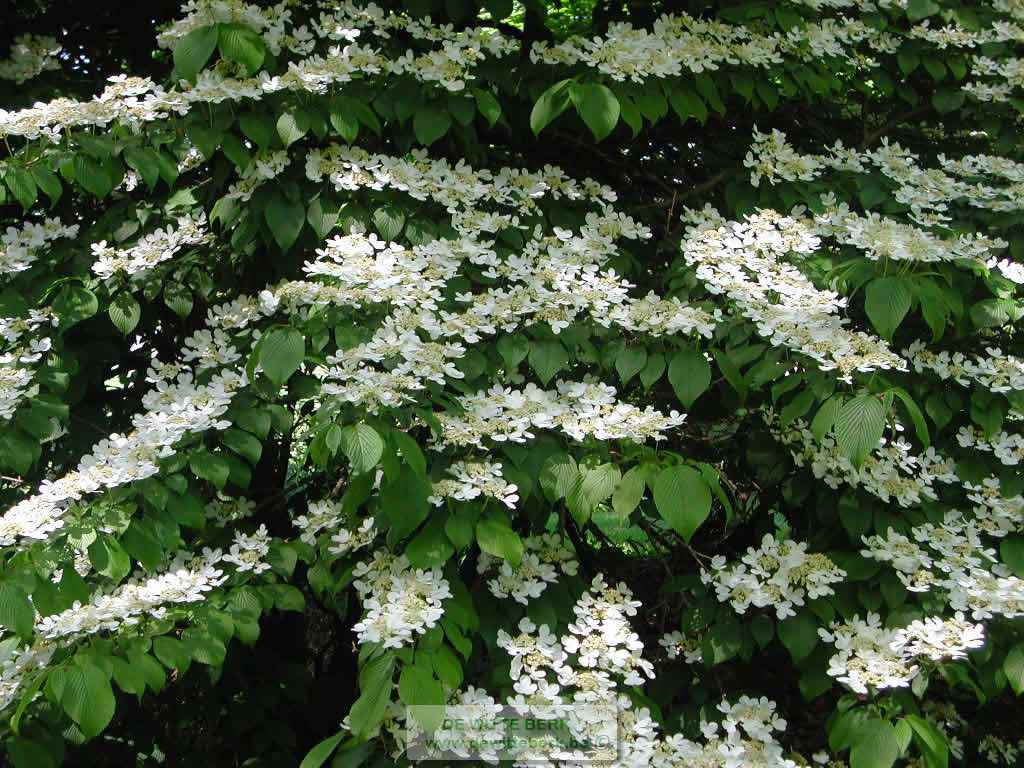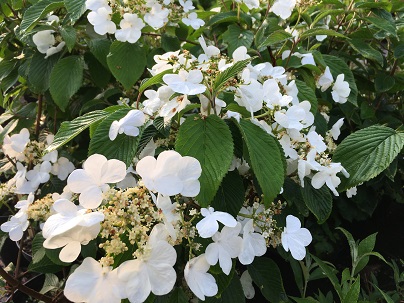Categorieen
- abelia
- acer
- amelanchier
- aronia
- buddleja
- callicarpa
- calycanthus
- camellia
- caragana
- carpinus
- caryopteris
- catalpa
- ceanothus
- cephalanthus
- cercis
- choisya
- clethra
- cornus
- corylopsis
- corylus
- cotinus
- cotoneaster
- crataegus
- deutzia
- diervilla
- edgeworthia
- elaeagnus
- eucalyptus
- euonymus
- exochorda
- fagus
- fatsia
- forsythia
- fothergilla
- fuchsia
- gleditsia
- hamamelis
- hedera
- heptacodium
- hibiscus
- hydrangea
- hypericum
- itea
- kolkwitzia
- leucothoe
- ligustrum
- liquidambar
- liriodendron
- lonicera
- loropetalum
- magnolia
- mahonia
- malus
- morus
- nandina
- nerium
- osmanthus
- parrotia
- perovskia
- philadelphus
- photinia
- physocarpus
- pieris
- pittosporum
- platanus
- potentilla
- prunus
- pyrus
- rhus
- ribes
- salix
- sambucus
- sarcococca
- skimmia
- sorbaria
- spiraea
- stephanandra
- stewartia
- styrax
- syringa
- tamarix
- tetrapanax
- tilia
- viburnum
- weigela
- acaena
- acanthus
- achillea
- agapanthus
- agastache
- ajuga
- alchemilla
- allium
- alyssum
- amsonia
- anaphalis
- anchusa
- anemone
- antennaria
- artemisia
- aruncus
- aster
- astilbe
- aubrieta
- bergenia
- brunnera
- calamintha
- campanula
- centaurea
- centranthus
- ceratostigma
- chelone
- chrysanthemum
- cimicifuga
- coreopsis
- crocosmia
- darmera
- delphinium
- dianthus
- doronicum
- echinacea
- echinops
- erigeron
- eupatorium
- euphorbia
- filipendula
- fragaria
- gaillardia
- galium
- gaura
- geranium
- geum
- gypsophila
- helenium
- helianthemum
- helianthus
- helleborus
- hemerocallis
- heuchera
- hosta
- houstonia
- iberis
- iris
- isotoma
- kalimeris
- knautia
- kniphofia
- lamiastrum
- lamium
- lavatera
- leucanthemum
- lewisia
- liatris
- ligularia
- liriope
- lupinus
- lysimachia
- lythrum
- nepeta
- oenothera
- ophiopogon
- pachysandra
- penstemon
- persicaria
- phlomis
- phlox
- physalis
- physostegia
- prunella
- pulmonaria
- pulsatilla
- rodgersia
- rudbeckia
- salvia
- sanguisorba
- santolina
- saponaria
- sedum
- solidago
- stachys
- symphytum
- teucrium
- thalictrum
- thymus
- tiarella
- tradescantia
- verbena
- veronica
- vinca
- waldsteinia
- abelia
- acer
- amelanchier
- aronia
- buddleja
- callicarpa
- calycanthus
- camellia
- caragana
- carpinus
- caryopteris
- catalpa
- ceanothus
- cephalanthus
- cercis
- choisya
- clethra
- cornus
- corylopsis
- corylus
- cotinus
- cotoneaster
- crataegus
- deutzia
- diervilla
- edgeworthia
- elaeagnus
- eucalyptus
- euonymus
- exochorda
- fagus
- fatsia
- forsythia
- fothergilla
- fuchsia
- gleditsia
- hamamelis
- hedera
- heptacodium
- hibiscus
- hydrangea
- hypericum
- itea
- kolkwitzia
- leucothoe
- ligustrum
- liquidambar
- liriodendron
- lonicera
- loropetalum
- magnolia
- mahonia
- malus
- morus
- nandina
- nerium
- osmanthus
- parrotia
- perovskia
- philadelphus
- photinia
- physocarpus
- pieris
- pittosporum
- platanus
- potentilla
- prunus
- pyrus
- rhus
- ribes
- salix
- sambucus
- sarcococca
- skimmia
- sorbaria
- spiraea
- stephanandra
- stewartia
- styrax
- syringa
- tamarix
- tetrapanax
- tilia
- viburnum
- weigela
- acaena
- acanthus
- achillea
- agapanthus
- agastache
- ajuga
- alchemilla
- allium
- alyssum
- amsonia
- anaphalis
- anchusa
- anemone
- antennaria
- artemisia
- aruncus
- aster
- astilbe
- aubrieta
- bergenia
- brunnera
- calamintha
- campanula
- centaurea
- centranthus
- ceratostigma
- chelone
- chrysanthemum
- cimicifuga
- coreopsis
- crocosmia
- darmera
- delphinium
- dianthus
- doronicum
- echinacea
- echinops
- erigeron
- eupatorium
- euphorbia
- filipendula
- fragaria
- gaillardia
- galium
- gaura
- geranium
- geum
- gypsophila
- helenium
- helianthemum
- helianthus
- helleborus
- hemerocallis
- heuchera
- hosta
- houstonia
- iberis
- iris
- isotoma
- kalimeris
- knautia
- kniphofia
- lamiastrum
- lamium
- lavatera
- leucanthemum
- lewisia
- liatris
- ligularia
- liriope
- lupinus
- lysimachia
- lythrum
- nepeta
- oenothera
- ophiopogon
- pachysandra
- penstemon
- persicaria
- phlomis
- phlox
- physalis
- physostegia
- prunella
- pulmonaria
- pulsatilla
- rodgersia
- rudbeckia
- salvia
- sanguisorba
- santolina
- saponaria
- sedum
- solidago
- stachys
- symphytum
- teucrium
- thalictrum
- thymus
- tiarella
- tradescantia
- verbena
- veronica
- vinca
- waldsteinia
Viburnum plicatum tomentosum
€ 43,55
| Maat | Eenheidsprijs | >24 | >100 |
|---|
| CO 15 L 100+ | € 43.55 | - | - |
|---|
| Maatcode | Omschrijving | Maatcode | Omschrijving |
|---|---|---|---|
| 020.40 | hoogte of breedte bij aankoop: 20 - 40 cm | CO | plant in container |
| 040.60 | hoogte of breedte bij aankoop: 40 - 60 cm | C | plant in container |
| 060.80 | hoogte of breedte bij aankoop: 60 - 80 cm | C2...C4.. | plant in 2..4 liter pot |
| 080.100 | hoogte of breedte bij aankoop: 80 - 100 cm | CSTR | struik in container |
| 100.125 | hoogte of breedte bij aankoop: 100 - 125 cm | CHS08.10 | hoogstammige boom in pot; stamhoogte: 220 cm; stamomtrek: 8/10 cm |
| 125.150 | hoogte of breedte bij aankoop: 125 - 150 cm | BOS | bossig struikje, grootte in cm |
| 150.175 | hoogte of breedte bij aankoop: 150 - 175 cm | BW | jonge haagplant met blote wortel, grootte in cm |
| 175.200 | hoogte of breedte bij aankoop: 175 - 200 cm | STAM | plant met stamlengte van ……cm |
| 200.250 | hoogte of breedte bij aankoop: 200 - 250 cm | P9 | plant in pot van 9 cm |
| 250.300 | hoogte of breedte bij aankoop: 250 - 300 cm | P12 | plant in pot van 12 cm |
| 300.350 | hoogte of breedte bij aankoop: 300 - 350 cm | KLIM | klimplant |
| CO5L | plant in pot van 5 L | ||
| HS06.08 | hoogstammige boom met blote wortel; stamhoogte: 220 cm; stamomtrek: 6/8 cm | ||
| HS08.10 | hoogstammige boom met blote wortel; stamhoogte: 220 cm; stamomtrek: 8/10 cm | V150.175 | geveerde, gevormde haagplant met lengte….. |
| HS10.12 | hoogstammige boom met blote wortel; stamhoogte: 220 cm; stamomtrek: 10/12 cm | V175.200 | geveerde, gevormde haagplant met lengte….. |
| HS12.14 | hoogstammige boom met blote wortel; stamhoogte: 220 cm; stamomtrek: 12/14 cm | V200.250 | geveerde, gevormde haagplant met lengte….. |
| HS14.16 | hoogstammige boom met blote wortel; stamhoogte: 220 cm; stamomtrek: 14/16 cm | V250.300 | geveerde, gevormde haagplant met lengte….. |
| DRK16.18 | hoogstammige boom met draadkluit; stamhoogte: 220 cm; stamomtrek: 16/18 cm | ||
| DRK18.20 | hoogstammige boom met draadkluit; stamhoogte: 220 cm; stamomtrek: 18/20 cm | ZCSTR | zware struik in pot |
| DRK20.25 | hoogstammige boom met draadkluit; stamhoogte: 220 cm; stamomtrek: 20/25 cm | LEI | leivorm bij fruitgoed |
| DRK25.30 | hoogstammige boom met draadkluit; stamhoogte: 220 cm; stamomtrek: 25/30 cm | LEI 2V | Leivorm bij fruitgoed: dubbel V |
| LEI 2U | Leivorm bij fruitgoed: dubbel U | ||
| DRKL | boom met draadkluit | ||
| STR3/5 | struik, blote wortel, 3-5 takken | ||
| STR5/8 | struik, blote wortel, 5-8 takken | ||
| KL | boom met kluit | ||
| LEI12.16 | voorgeleide boom met voorgeleide takken, meestal 4 etages op 200-250-300-350cm | ||
| DAK12.14 | voorgeleide boom met dakstructuur, stamhoogte 240-260cm | ||
| nbsp; | |||
| C1.5 ST | Plant in 1,5L pot Gestokt : Aangebonden aan bamboestok |
WB-PALLET waarborg pallet
<100M2TRAN transportkosten: minder dan 100 m2
| Bloemkleur |
|
|---|---|
| Bloeimaand |
|
| Categorie |
|
| Hoogte volwassen plant |
|
| Snelselectie |
|
| Bloemvorm |
|
| Grondsoort |
|
| Speciaal |
|
| Vormen |
|
| Standplaats |
|
| Afstand |
|
Viburnum plicatum f. tomentosum
De nederlandse naam is "Japanse sneeuwbal", familie van de Caprifoliaceae. De bloemkleur is wit en de bloeitijd is van ca. mei tot en met juni. De bladeren zijn groen. De volwassen hoogte van deze middelgrote heester is ca. 400 cm. Verdraagt een temperatuur tot -25 gr. C. Heeft een opvallende bloeiwijze.
Geschikt voor een soortrijke aanplant.
Bijvoorbeeld in bosranden, bosschages, openbaar groen en in de tuin. Aantrekkelijk soort, die niet voor een erg moeilijke plaats geschikt is. Voor een frisse tot vochtige grond, die zuur tot neutraal is en bestaat uit zand-humus of leem/klei-humus. Zonnig tot halfschaduw, warmte verdragend. Kan bij late nachtvorst schade oplopen. In jong stadium gemakkelijk met vaste planten te combineren maar op den duur alleen met bos- en bosrandplanten.
Grond moet goed los en voedzaam zijn. Zware grond niet verdichten door bijvoorbeeld veel rond de struik te lopen, of er vlak langs te rijden (auto, oprit). Moet om de paar jaar gedund worden, d.w.z. oud hout wordt na de bloei zo diep mogelijk uit de struik gelicht.
Bemesting:
De nederlandse naam is "Japanse sneeuwbal", familie van de Caprifoliaceae. De bloemkleur is wit en de bloeitijd is van ca. mei tot en met juni. De bladeren zijn groen. De volwassen hoogte van deze middelgrote heester is ca. 400 cm. Verdraagt een temperatuur tot -25 gr. C. Heeft een opvallende bloeiwijze.
Geschikt voor een soortrijke aanplant.
Bijvoorbeeld in bosranden, bosschages, openbaar groen en in de tuin. Aantrekkelijk soort, die niet voor een erg moeilijke plaats geschikt is. Voor een frisse tot vochtige grond, die zuur tot neutraal is en bestaat uit zand-humus of leem/klei-humus. Zonnig tot halfschaduw, warmte verdragend. Kan bij late nachtvorst schade oplopen. In jong stadium gemakkelijk met vaste planten te combineren maar op den duur alleen met bos- en bosrandplanten.
Grond moet goed los en voedzaam zijn. Zware grond niet verdichten door bijvoorbeeld veel rond de struik te lopen, of er vlak langs te rijden (auto, oprit). Moet om de paar jaar gedund worden, d.w.z. oud hout wordt na de bloei zo diep mogelijk uit de struik gelicht.
Bemesting:



